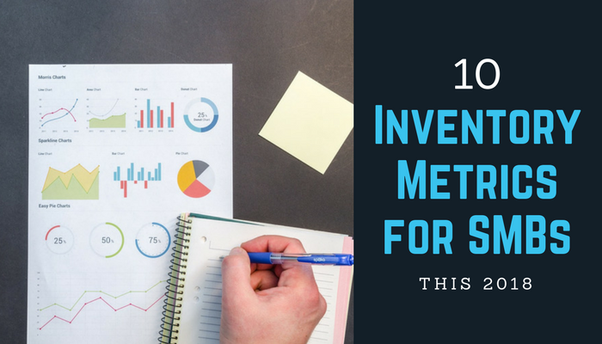5 Inventory Metrics that Every Retailer Should Track
If you are
running a retail business, exercising inventory control and efficientlymanaging inventory is of utmost importance to maintain the stability of your
business. By knowing and looking after right inventory metrics, you can avoid
both surplus and deficit in your warehouse which is cost effective.
In this
post, we are going to discuss top inventory metrics that you need to track as a
retailer. Let’s get started:
Gross
margin return on investment or GMROI helps retailers to know what they are
getting back in return in return for what
they have spent. You measure the profit return you are getting the funds that
you have put in your inventory. The formula of GMROI: gross returns/average cost
of inventory. While there are many other inventory ratios and functions, GMROI
is one of the most crucial metric that retail owners track to optimize their inventory process.
By calculating GMROI,
retailers can find the proportion of profit made against the scarce resources
that take up your warehouse or storage
space.
If you have
limited space, you can calculate profit generated per square foot of your
storage space that the inventory occupies. In case you have limited monetary
resources, you can streamline your inventory by focusing on profit generated
per average stock held. Thus, you can make better decisions under various circumstances.
Inventory
turnover or stock turn is a metric that calculates sell through against the
stock held. This metric gives a clear picture of sales versus items stocked. As
a retailer, high inventory turnover ratio is favorable
for your business because it is an indicator that you are selling more than you
are stocking.
The stock turn is
calculated using a formula: the cost of
goods sold/ average inventory
You can
track your efficiency by using this formula. Higher inventory turnover ratio
means that you are investing less in
inventory for generating the profitable
level of sale. This ratio can be calculated for both shorter and longer time
periods (if the periods are consistent).
If your
business is a highly seasonal one, you can look into shorter time periods to track
inventory in high vs. low seasons.
For a
retail owner, knowing top performing products and least performing products is
crucial. Using product performance metric, you will be able to make informed
decisions on many issues, including:
·
What
product should be stocked up?
·
What
items need a promotional push to perform better?
If you
apply the 80/20 rule to maintain your inventory stock, product performance is
the first metric and at times the only metric you must look at. By comparing
stock orders and sale reports, you can find top performing and slow performing
products.
1. Shrinkage
Shrinkage
refers to the difference between the amount of stock appearing of the paper or
records and the actual stock available physically. This reduction in sales is
not caused by sales rather it is caused by reasons including, shoplifting,
supplier fraud, administrative errors and employee theft.
According
to many national and international standards, favorable
shrinkage is 1.38%. Measuring shrinkage not only allows you to find out all the
risk factors but also helps you in finding solutions that promote inventory
accuracy.
Tips to reduce shrinkage:
·
You
must regularly count your inventory to spot, prevent and address shrinkage
·
Physical
verification of stock helps in reducing shrinkage to a great extent
·
Use
technology or hire special staff to physically count your inventory
When you put the percentage of units sold against the stock available to be sold is
known as sell-through rate. It is
calculated by dividing the number of units sold by opening stock
multiplied by 100. This metric allows retailers to make informed decisions
about slow performing products such as announcing discount. You need to focus
on improving your sell-through rate.
The mentioned 5 inventory metrics allow
retailers to enhance the accuracy of their inventory and magnify the profits. Retailers can improve inventory management and
inventory control by calculating these five inventory metrics.






Comments
Post a Comment